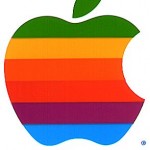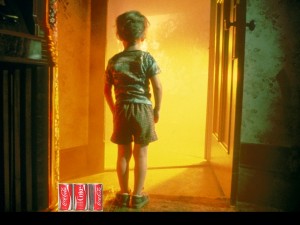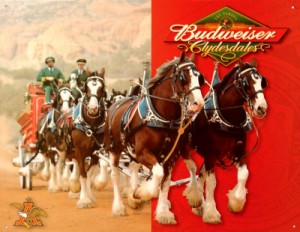 Do popular brands help define who we are? Do they help provide the visual and iconic clues that define an era or specific moments in time? And do brands need to stick to one image or campaign in order to be successful as representations of moments in time?
Do popular brands help define who we are? Do they help provide the visual and iconic clues that define an era or specific moments in time? And do brands need to stick to one image or campaign in order to be successful as representations of moments in time?
Brands that stand the test of time are the ones that are fully ingrained in consumers’ minds. Al Ries of Advertising Age recently wrote an excellent article that argues, “Once a brand is established with a clearly defined marketing position, the brand’s owner should ask a fundamental question before making any significant changes. Why tinker with success?â€
Mr. Ries also states, “the way to build a brand is with a consistent message over an extended period of time.†The end result of creating a consistent message is what’s known as building brand equity. Brand Equity is created over time through marketing, PR, advertising and more recently social media, and is constantly reinforced by gentle or sometimes over-the-top reminders (ads) that together serve as a ubiquitous force that’s woven into our collective conscience. In other words, we become so familiar with the brand that we recognize it as being a normal part of popular culture and our everyday lives.
As Colin Drummond so eloquently wrote in his blog Brands Belong in Culture, Not Categories:
A brand’s true usefulness is in how it helps us to participate in culture… brands represent aspects of today’s America: modernity, hope, intelligence, optimism, blindness and decay. These brands are culturally useful to us when we use them or even just have an opinion about them. Because our association with them says a lot about who we are. Significant brands are never just relevant to a category, they contribute to culture at large.
Marking Time with Familiar Brands
Familiar brands from Apple and IBM to Kellogg’s and Colgate-Palmolive often form the  backdrop to our daily existence and over time become the icons that help define the present and our past. As Science Creative‘s blog mentioned in an earlier post on technology, “look at any old photograph and it’s the clothes and “products†around the subjects that truly dates the photo.â€
backdrop to our daily existence and over time become the icons that help define the present and our past. As Science Creative‘s blog mentioned in an earlier post on technology, “look at any old photograph and it’s the clothes and “products†around the subjects that truly dates the photo.â€
Making Films Look Contemporary
 And what about movies that take place in present day? Present day is only deemed “present†for a limited time, then the film becomes a representation and a reminder of the past. If you think way back to Stephen Spielberg’s 1977 classic, Close Encounters Of The Third Kind or 1982’s ET the Extra-Terrestrial, these two films were contemporary for the day and each contained scenes where many familiar brands were in view. Yes, what some may call shameless product-placement, was in fact Spielberg carefully setting a baseline for normality. In Close Encounters we see Barry Guiler’s (the little boy) refrigerator filled with familiar brands including pull-tab Coca-Cola cans spilling their contents and later we see a McDonald’s and Shell gas station that all seem to validate the “typical†landscape of Midwest America in 1977. At one point in ET the audience sees the title character looking inside a fridge that also contains several well-known brands such as Coors beer– all of which reinforces the notion that it’s just a normal American household.
And what about movies that take place in present day? Present day is only deemed “present†for a limited time, then the film becomes a representation and a reminder of the past. If you think way back to Stephen Spielberg’s 1977 classic, Close Encounters Of The Third Kind or 1982’s ET the Extra-Terrestrial, these two films were contemporary for the day and each contained scenes where many familiar brands were in view. Yes, what some may call shameless product-placement, was in fact Spielberg carefully setting a baseline for normality. In Close Encounters we see Barry Guiler’s (the little boy) refrigerator filled with familiar brands including pull-tab Coca-Cola cans spilling their contents and later we see a McDonald’s and Shell gas station that all seem to validate the “typical†landscape of Midwest America in 1977. At one point in ET the audience sees the title character looking inside a fridge that also contains several well-known brands such as Coors beer– all of which reinforces the notion that it’s just a normal American household.
The point is, Spielberg wasn’t looking to incorporate these well known brands into the script only for the product placement fees, rather, they played an integral role in creating a sense of the familiar and even framing a banal comfort zone for the viewer so that when each of the film’s extraordinary events later took place – they appeared that much more intense. Spielberg employed the use of everyday products and their core brand equity to help deliver realistic scenes that the audience would immediately (maybe even unconsciously) recognize and therefore accept as being ordinary.
Brands – Clearly Defined
 Many of the brands that we are most familiar with have been carefully crafted and strategically positioned over time. Advertisers and marketers would argue that having one consistent message is what’s most important when building a product’s brand equity, and for the most part that is true.
Many of the brands that we are most familiar with have been carefully crafted and strategically positioned over time. Advertisers and marketers would argue that having one consistent message is what’s most important when building a product’s brand equity, and for the most part that is true.
However, a clearly defined brand isn’t necessarily the result of a single, consistent advertising campaign. As most marketers know, a clearly defined and recognizable brand is much more than an ad campaign or a distinct logo. It’s the cumulative product of those who live the brand (employee’s) and those who interact with it (customers, shareholders, vendors and potential customers). The core brand equity is built up (or torn down) as a result of the consistency of the ad message – specifically as it pertains to delivering on its promise. Does the product or service live up to its claim? If the perceived value is positive then the reputation of the brand should excel. If not, then retooling is required for both the message and the product. This is where Ries argues that “the urge to tinker never diesâ€, only his key point is don’t fix it if it’s not broke.
Brand Reputation
Therefore, as long as the brand has a solid reputation with its customer base there should be no real issue with having more than one campaign. (Assuming of course if it makes sense with the target audience demographics.) After all, Budweiser has had several campaigns that have run at the same time and each has added to strengthening its core-brand equity over several decades.
GEICO insurance is another leading example of a brand that has run several different advertising campaigns simultaneously with great success. From the Cockney gecko to a stack of cash with googly eyes, to the popular cavemen series and most recently with the “serious guy†asking rhetorical questions, GEICO has developed a reputation for humor while deftly  targeting several demographics.The Berkshire Hathaway owned company has created its brand equity through multiple campaigns that all conclude with the familiar tagline “15 minutes could save you 15% or more on your car insurance.â€
targeting several demographics.The Berkshire Hathaway owned company has created its brand equity through multiple campaigns that all conclude with the familiar tagline “15 minutes could save you 15% or more on your car insurance.â€
Any one of the GEICO campaigns could also be used a marker of time. If one of the commercials were placed in the background of a present day movie – most of the audience would immediately make the connection with the brand. For example, if a film were to be set in 2005 the first of the caveman series could serve as a beacon to help authenticate that moment in time. The GEICO caveman has also transcended the TV screen and are the characters are even “spokesmen” at live events such as NHL games. For example, several years from now looking back at a broadcast of a 2010 Washington Capitals game that featured a caveman in the stands will definitely mark this era.
It may be true that not all brands help define who we are or the times we live in, but there are many that clearly do just that. They serve as signposts that help delineate a decade, year or even a certain day. Brands that standout as being part of an era are those that have done so by being well integrated into present day life in a seemingly effortless manner. It’s those iconic brands with a clear and concise message, no matter what the campaign may be, that we easily recognize in present day films as being contemporary and years later, as the true representations of the past.
If you liked this post, please feel free to share it with a simple click below.
While you’re at it, why not subscribe to the RSS feed so you don’t miss anything? Thanks for reading.